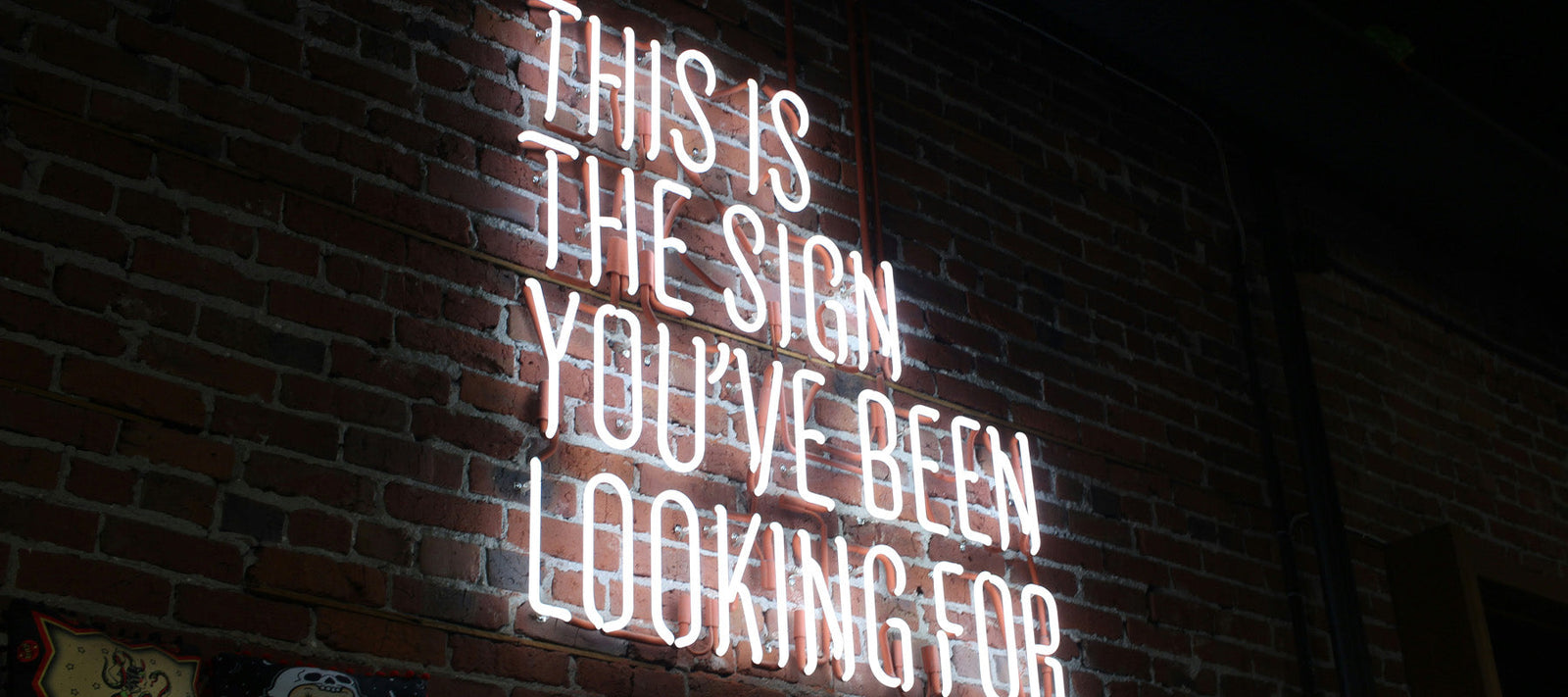Lighting is often regarded as one of the unsung heroes of retail design, quietly influencing customer behaviour and shaping the overall shopping experience. From highlighting products to creating ambiance, the strategic use of lighting can significantly impact the way customers perceive and interact with a retail space. In this blog post, we'll delve into the multifaceted role of lighting in retail design, exploring its power to illuminate the path to purchase and enhance the overall ambiance of a store.
Shedding Light on the Shopping Experience
In the world of retail, first impressions are everything. Lighting plays a pivotal role in setting the mood, guiding customers through the space, and ultimately influencing their purchasing decisions. From bright and inviting to moody and atmospheric, the right lighting can transform a mundane shopping trip into a memorable experience.
The Psychology of Lighting in Retail Design:
1. Creating Visual Interest:
Lighting draws attention to key areas of a retail space, highlighting products and displays and guiding customers' gaze toward desired focal points. By strategically illuminating merchandise, retailers can captivate customers' attention and entice them to explore further.
2. Setting the Tone:
The ambiance of a retail environment is heavily influenced by lighting. Bright, uniform lighting conveys a sense of energy and vibrancy, while softer, diffused lighting creates a more relaxed and intimate atmosphere. The choice of lighting can shape customers' perceptions of a brand and influence their mood and behaviour.
3. Enhancing Product Presentation:
Proper lighting is essential for showcasing products in their best light (pun intended). By illuminating merchandise effectively, retailers can enhance its visual appeal, highlight features and details, and create a more enticing shopping experience.
Types of Lighting in Retail Design:
1. General Ambient Lighting:
Ambient lighting provides overall illumination throughout the retail space, ensuring that customers can navigate the store comfortably. This type of lighting is typically uniform and diffused, creating a bright and welcoming environment.
2. Accent Lighting:
Accent lighting is used to highlight specific areas or products within the store, such as featured displays, promotional items, or architectural details. By directing attention to key focal points, accent lighting adds visual interest and draws customers' eyes to desired areas.
3. Task Lighting:
Task lighting is focused illumination used for specific tasks or activities, such as reading product labels, trying on clothing, or examining merchandise up close. Task lighting ensures that customers can interact with products comfortably and accurately assess their quality and features.
The Impact of Lighting on the Shopping Experience:
1. Navigation and Wayfinding:
Properly illuminated pathways and signage help customers navigate the store with ease, reducing confusion and frustration. Well-placed lighting serves as a visual guide, leading customers along the path to purchase and enhancing their overall shopping experience.
2. Emotional Engagement:
Lighting has a profound effect on mood and emotion. Warm, inviting lighting can create a sense of comfort and relaxation, encouraging customers to linger and explore, while cooler, more dynamic lighting may evoke a sense of excitement and energy, prompting impulse purchases.
3. Brand Identity and Image:
Lighting plays a crucial role in shaping customers' perceptions of a brand. The quality and style of lighting can convey a brand's personality and values, whether it's sleek and modern, warm and inviting, or bold and dramatic. Consistent lighting design reinforces brand identity and helps establish a cohesive brand image across all touchpoints.
Case Studies in Effective Lighting Design:
1. Apple Stores:
Apple's retail stores are renowned for their minimalist design aesthetic and impeccable lighting. The combination of natural light, recessed fixtures, and strategically placed spotlights creates a bright, open, and inviting atmosphere that showcases Apple products in their best light.
2. Anthropologie:
Anthropologie's stores are known for their eclectic and whimsical ambiance, which is enhanced by creative lighting design. Soft, diffused lighting creates a warm and intimate atmosphere, while strategically placed accent lights highlight curated displays and artisanal products.
Best Practices for Lighting Design in Retail:
1. Consider the Customer Experience:
When designing lighting for a retail space, consider the needs and preferences of your target customers. Tailor the lighting design to create the desired ambiance and enhance the overall shopping experience.
2. Balance Functionality and Aesthetics:
Lighting should not only be functional but also aesthetically pleasing. Balance ambient, accent, and task lighting to create a visually appealing environment that highlights products and creates a welcoming atmosphere.
3. Embrace Energy Efficiency:
Choose energy-efficient lighting fixtures and bulbs to reduce energy consumption and operating costs. LED lighting, in particular, offers significant energy savings and has a longer lifespan than traditional incandescent bulbs.
Illuminating Success in Retail Design
In the world of retail, lighting is more than just a practical necessity—it's a powerful tool for creating immersive and engaging experiences. From guiding customers through the store to enhancing product presentation and shaping brand identity, the strategic use of lighting can have a profound impact on the overall shopping experience. By understanding the psychology of lighting and embracing best practices in lighting design, retailers can illuminate the path to purchase and create spaces that captivate, inspire, and leave a lasting impression on customers.
Shedding Light on the Shopping Experience
In the world of retail, first impressions are everything. Lighting plays a pivotal role in setting the mood, guiding customers through the space, and ultimately influencing their purchasing decisions. From bright and inviting to moody and atmospheric, the right lighting can transform a mundane shopping trip into a memorable experience.
The Psychology of Lighting in Retail Design:
1. Creating Visual Interest:
Lighting draws attention to key areas of a retail space, highlighting products and displays and guiding customers' gaze toward desired focal points. By strategically illuminating merchandise, retailers can captivate customers' attention and entice them to explore further.
2. Setting the Tone:
The ambiance of a retail environment is heavily influenced by lighting. Bright, uniform lighting conveys a sense of energy and vibrancy, while softer, diffused lighting creates a more relaxed and intimate atmosphere. The choice of lighting can shape customers' perceptions of a brand and influence their mood and behaviour.
3. Enhancing Product Presentation:
Proper lighting is essential for showcasing products in their best light (pun intended). By illuminating merchandise effectively, retailers can enhance its visual appeal, highlight features and details, and create a more enticing shopping experience.
Types of Lighting in Retail Design:
1. General Ambient Lighting:
Ambient lighting provides overall illumination throughout the retail space, ensuring that customers can navigate the store comfortably. This type of lighting is typically uniform and diffused, creating a bright and welcoming environment.
2. Accent Lighting:
Accent lighting is used to highlight specific areas or products within the store, such as featured displays, promotional items, or architectural details. By directing attention to key focal points, accent lighting adds visual interest and draws customers' eyes to desired areas.
3. Task Lighting:
Task lighting is focused illumination used for specific tasks or activities, such as reading product labels, trying on clothing, or examining merchandise up close. Task lighting ensures that customers can interact with products comfortably and accurately assess their quality and features.
The Impact of Lighting on the Shopping Experience:
1. Navigation and Wayfinding:
Properly illuminated pathways and signage help customers navigate the store with ease, reducing confusion and frustration. Well-placed lighting serves as a visual guide, leading customers along the path to purchase and enhancing their overall shopping experience.
2. Emotional Engagement:
Lighting has a profound effect on mood and emotion. Warm, inviting lighting can create a sense of comfort and relaxation, encouraging customers to linger and explore, while cooler, more dynamic lighting may evoke a sense of excitement and energy, prompting impulse purchases.
3. Brand Identity and Image:
Lighting plays a crucial role in shaping customers' perceptions of a brand. The quality and style of lighting can convey a brand's personality and values, whether it's sleek and modern, warm and inviting, or bold and dramatic. Consistent lighting design reinforces brand identity and helps establish a cohesive brand image across all touchpoints.
Case Studies in Effective Lighting Design:
1. Apple Stores:
Apple's retail stores are renowned for their minimalist design aesthetic and impeccable lighting. The combination of natural light, recessed fixtures, and strategically placed spotlights creates a bright, open, and inviting atmosphere that showcases Apple products in their best light.
2. Anthropologie:
Anthropologie's stores are known for their eclectic and whimsical ambiance, which is enhanced by creative lighting design. Soft, diffused lighting creates a warm and intimate atmosphere, while strategically placed accent lights highlight curated displays and artisanal products.
Best Practices for Lighting Design in Retail:
1. Consider the Customer Experience:
When designing lighting for a retail space, consider the needs and preferences of your target customers. Tailor the lighting design to create the desired ambiance and enhance the overall shopping experience.
2. Balance Functionality and Aesthetics:
Lighting should not only be functional but also aesthetically pleasing. Balance ambient, accent, and task lighting to create a visually appealing environment that highlights products and creates a welcoming atmosphere.
3. Embrace Energy Efficiency:
Choose energy-efficient lighting fixtures and bulbs to reduce energy consumption and operating costs. LED lighting, in particular, offers significant energy savings and has a longer lifespan than traditional incandescent bulbs.
Illuminating Success in Retail Design
In the world of retail, lighting is more than just a practical necessity—it's a powerful tool for creating immersive and engaging experiences. From guiding customers through the store to enhancing product presentation and shaping brand identity, the strategic use of lighting can have a profound impact on the overall shopping experience. By understanding the psychology of lighting and embracing best practices in lighting design, retailers can illuminate the path to purchase and create spaces that captivate, inspire, and leave a lasting impression on customers.






